Advertisements
Advertisements
प्रश्न
Mention the characteristics of the image that falls on the retina of the eye.
उत्तर
The image formed on the retina is inverted, diminished, and real.
APPEARS IN
संबंधित प्रश्न
The human eye can focus objects at different distances by adjusting the focal length of the eye lens. This is due to ______.
Write short notes on the following: Retina
Match the following:
| Column I | Column II |
| (i) Myopia | (a) Converging power of eye lens becomes low |
| (ii) Hypermetropia | (b) Converging power of eye lens remains the same |
| (c) Converging power of eye lens becomes high |
The optical prescription for a pair of spectacles is :
Right eye : −3.50 D
Left eye : −4.00 D
Which is the weaker eye?
What is the name of:
the light-sensitive layer in the eye?
Out of rods and cones m the retina of your eye:
which detect colour?
Differentiate between:
Retina and Choroid.
Give Technical Term:
The adjustment of the eye in order to obtain a clear vision of objects at different distances
State the Function:
Choroid coat in the eye
The image of the object in the human eye is formed on the cross screen.
The following figure show the change in the shape of the lens while seeing distant and nearby objects. Complete the figures by correctly labelling the diagram.
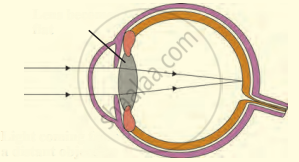
The following figure show the change in the shape of the lens while seeing distant and nearby objects. Complete the figures by correctly labelling the diagram.
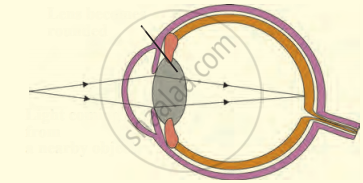
A prism ABC (with BC as base) is placed in different orientations. A narrow beam of white light is incident on the prism as shown in Figure . In which of the following cases, after dispersion, the third colour from the top corresponds to the colour of the sky?
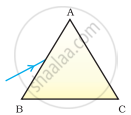 |
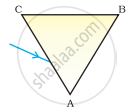 |
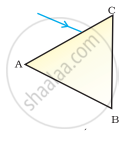 |
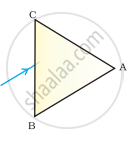 |
| (i) | (ii) | (iii) | (iv) |
Which cells of the retina enable us to see coloured objects around us?
The innermost layer of human eye is ______.
Match the following:
| Column - I | Column - II |
| 1. Retina | a. Pathway of light |
| 2. Pupil | b. Far point comes closer |
| 3. Ciliary muscles | c. near point moves away |
| 4. Myopia | d. Screen of the eye |
| 5. Hypermetropia | f. Power of accommodation |
Match the following:
| Column - I | Column - II |
| 1. Retina | a. Path way of light |
| 2. Pupil | b. Far point comes closer |
| 3. Ciliary muscles | c. near point moves away |
| 4. Myopia | d. Screen of the eye |
| 5. Hypermetropia | e. Power of accommodation |
Match the following.
| Column - I | Column - II | ||
| 1 | Retina | a | Path way of light |
| 2 | Pupil | b | Far point comes closer |
| 3 | Ciliary muscles | c | near point moves away |
| 4 | Myopia | d | screen of the eye |
| 5 | Hypermetropia | e | Power of accomadation |
Name the following:
Two pigments of the sensory cells.
With reference to human eye answer the question that follow:
Name the part of the eye associated with the regulation of the shape of lens.
